- Home
- James Rollins
Unrestricted Access Page 39
Unrestricted Access Read online
Page 39
Landon came up from behind and joined her. He took in the room, then stiffened, and rushed past her. He dashed over to where her grandfather lay on his side on the floor, propped up on one arm.
Landon waved to Tucker. “Help me with Jackson. Hurry!”
Tucker responded to the urgency and joined the physicist. They each grabbed an arm. Her grandfather’s left leg was bleeding heavily, soaking through his pants, the bone clearly broken. His eyes were glassy with shock. But that wasn’t the reason for Landon’s urgency.
Over Landon’s shoulder, Abbie saw something flashing and buzzing swiftly along the far wall. A fuse. One of Hawk’s wild rounds must have sparked it to life. It led to a stick of dynamite poking out of a crack in the far wall. Below was a stack of more red sticks. As a geologist, she knew dynamite was sensitive to concussion. Struck with enough force—a nearby blast, a pelting of rocks—it could all blow.
Tucker must have realized it, too. He yanked her grandfather into his arms and hauled him in a fireman’s carry. “Run!”
Abbie turned and led the way back up the tunnel. She barely made it a few yards when the world exploded behind her. The blast tossed her forward, sprawling her headlong. Crystalline dust rolled over her. She quickly regained her feet, knowing it wasn’t over.
She tossed aside her Glock, fumbled out a flashlight, and clicked it on. “Keep going!” she hollered to the others.
She ran faster up the tunnel’s spiral.
Another boom—muffled by the distance, but far stronger. The entire hill quaked from the explosion. She stumbled and fought to keep her footing. Cracks skittered across the walls and roof. She lifted an arm to protect her head as sections broke, spilling rock and cinders.
Finally, the end came into view, the exit brightly lit by sunshine after the gloom of the tunnel. She raced to it and out into the open air. Once free, she slowed, panting, heart pounding.
“Don’t stop!” Tucker shouted, still carrying her grandfather’s limp form.
Landon and Kane followed.
The ground trembled ominously. Behind them, the cinder dome shook, slowly disintegrating, sending down avalanches of rocks. Abbie fled into the forest and angled toward the flood-washed path up to the rock dam. She glanced back through the twisted tree trunks and saw a huge black boulder crash down the cinder hillside and smash through the archway. Silt and sand flowed after it, covering the opening, until there was no sign of the tunnel ever being there.
Finally, she reached the open wash and climbed past uprooted trees. At the top, she turned around. She leaned her back against the red-rock slab that had sealed this valley for centuries.
The ground continued to quake in a worrisome manner.
She pictured the fault line running through the center of this ancient caldera.
None of them felt confident enough to crawl through the tunnel under the slab. Not with the earth still shaking. Especially since the tunnel here had already shrunk to half its size, as the slab settled earthward.
And maybe they wouldn’t have to risk it.
Tucker joined her. He had left her grandfather to Landon’s care. He lowered his satellite phone. “Help’s on the way. Med-evac will be here in a couple of minutes.”
“Thank you,” she mumbled, then turned to Kane. “Thanks to both of you.”
“Considering you just saved our lives back there,” Tucker said, “I’d say that debt is paid in full.”
She wasn’t so sure that was true.
Still, she stared back to the center of the valley. A wide fissure had opened down there. As she watched, the broken remains of the dark cinder dome sifted down into that crack, slowly sinking and vanishing away.
She felt both relieved and saddened.
At long last, that Black Moon was setting.
(15)
April 26, 6:50 p.m.
Four days later, Tucker sat atop a tall arch of stone. As sunset neared, he dangled his feet over the fifty-foot drop. Devil’s Bridge was a Sedona landmark, one of its largest natural stone arches.
And nowhere near a vortex.
Kane sat next to him, his tail idly swishing, his tongue lolling happily. They had enjoyed the short, easy hike from the trailhead. Kane had chased a few jackrabbits, gave a roadrunner a good race. The trail was a popular one, but this late on a cold day, they had this singular attraction all to themselves.
Which is the way Tucker preferred.
The past few days had been hectic, full of noise and bluster. Then again, he had left a trail of dead bodies across the desert. Director Crowe had helped grease wheels here, so Tucker and Kane wouldn’t have to stick around these parts for long. It also helped that Abigail Pike, Jackson Kee, and Dr. Landon—who were all well respected locally—readily vouched for him. He did his best to avoid the press, which was like trying to escape a buzzing cloud of mosquitoes.
But matters were already quieting down.
Especially as much of their story remained untold.
Who would believe any of it?
Tucker even wondered how much was real and how much was some fevered dream stirred up by vortex energies. They had all agreed to keep silent, to stick to a story of claim jumpers and lost treasure, which fitted these lands perfectly.
Tucker had visited Jackson Kee at the hospital. The old guy seemed to be recuperating well, especially as he was attended to by a furry and devoted nurse. Cooper had been ecstatic to be reunited with Jackson and refused to leave his bedside.
Now that’s loyalty I can understand.
Tucker reached over and scratched Kane’s ear, earning a heavy thump of a tail.
Over at the University of Sedona, Abbie and Landon planned to continue their study of the huge agate that the old prospector had discovered. It was all that was left of the vast mother lode. The giant geode had broken apart and fallen deep into the earth, along with a good chunk of the valley. Even if any pieces were recoverable, the land was part of Yavapai sacred grounds, where mining was prohibited.
And just as well.
As the sun sank on this day, Tucker tried to remember what had happened. Like most dreams, he had a harder and harder time remembering the details of his vision.
After the group had been airlifted to safety, they had all compared notes. Tucker had shared what he’d experienced. Jackson claimed not to have seen any of that war-ravaged mountaintop, only that Tucker had been transfixed and started walking toward the arch, despite the old man’s best efforts to stop him.
Tucker glanced over to Kane.
But you saw something, didn’t you, buddy?
He remembered his partner’s reaction, the way Kane seemed equally focused on Abel, calling out to his brother. Maybe it was some testament to their bonds, not just Tucker and Kane’s, but all three of them.
Tucker shook his head.
Landon had tried to offer various hypotheses for Tucker’s experience, going on about alternate dimensions, quantum entanglement, string theory. Abbie offered a more clinical opinion, repeating her idea of vortexes stimulating magnetite particles in the brain, reawakening emotional trauma buried deep in the basal ganglia.
All Tucker knew was that he felt better.
Lighter in spirit.
For now, he let it all go, enjoying this moment with Kane. As he did so, a huge halo formed around the setting sun. Tucker shaded his eyes against the glare. To the right and left, smaller suns appeared at the edges of the halo, ghostly mirages of the sun in the center. Tucker had witnessed this atmospheric effect in the past. It was rare, but not unheard of.
Still, he took it as a sign.
The two smaller patches of brightness were called sun dogs.
The phenomenon was ephemeral, a brief moment in time when these twin suns would accompany their larger brother. They burned brightly, but only for a short time. While the sun would always shine, the time it shared with its smaller companions was destined to be fleeting.
Tucker reached out and pulled Kane closer.
He rememb
ered his last view of Abel, standing on that mountaintop.
He would treasure them both—no matter how long or how brief they shone beside him. He pictured Abel turning away and vanishing.
What did any of it truly mean?
He gazed at the sun dogs in the sky.
Who knows?
Maybe in some other place, in some other time—there was an answer waiting to be found.
* * *
The dog runs across the cold desert under colder stars. A bright moon casts the sand and scrub into shades of silver. He has been running for eight days, hiding where he could: a stone barn, a hollow log, a deep gully.
He knows his destination, but not the distance.
He follows what guides his heart, the tether that leads him unerringly toward his goal. He heads ever onward. He drinks from icy streams, eats carrion, anything to keep moving. As he runs, his left forelimb hangs uselessly, but he holds it up and forges on.
He was given an order, a command he refuses to forsake.
As night brightens toward morning, he sees a cluster of tents, a circle of sandbag fences, topped by razor wire. He limps toward it, near exhaustion, his ribs sticking out, his paw dragging, no longer able to hold it up.
He smells cookfires, sizzling meat.
He hears voices, both bright and dark.
He forces himself the last of the way to the fence. He circles until he stands shakily before the gates. A bright light blinds him. The gate creaks. Boots rush toward him.
He finally sits, balancing his front half on his good leg.
Hands rub him, breaths bathe him, excited voices echo.
Then he feels it, deep inside him.
The tether grows shorter.
Someone speaks. “Is that really him?”
A form drops in front of him, kneeling there.
He feels another come forward and nose him, whining, whimpering.
He knows his brother.
But he gives all his attention, all his heart to the one before him.
He wags his tail, knowing he has not failed. He was given an order on a mountaintop: Run until you’re home again.
He feels his snout gently lifted, and a nose touches his.
“Who’s the best boy?”
Abel licks Tucker’s nose.
I am.
Author’s Note to the Reader
Truth or Fiction
As with my past Sigma novels, I thought I’d spend these final few pages discussing how much of this novella is based on fact and how much is born of my own imagination. So please bear with me:
Sedona and the Sonoran Desert. I had a chance to vacation in Sedona. I was not planning to write a story about the town or the surrounding desert. I had touched upon this area in my novel The Devil Colony, so I hadn’t thought there was another story to tell here. Then, like Tucker, I met a former biker at a breakfast counter (do eat at the Wildflower Bread Company). We got to talking, and he told me his story of his skeptical nature, how when he had first come to Sedona, he hadn’t believed any of that “hogwash from those crystal munchers” (his words) about the area’s vortexes. Then years later, he had the encounter described in the novella and became a believer. He was so adamant, so convincing, that I had to look more deeply into the subject manner, which meant traveling to many of Sedona’s famous—
Vortexes. Now, I have to admit I did not experience any of those effects. Maybe I was too skeptical, too analytical, that I failed to settle into the right frame of mind. But I did interview several people—both locals and scientists like Abbie and Landon—who firmly believe these sites to be nexuses for earthly energies. I listened to their theories and included several in this novella. I took copious notes about their experiences, which also appear here, including their warning about keeping firm control over your emotions when visiting a vortex, as those energies were believed to magnify feelings, especially bad ones. So, if you’re curious, I’d encourage you go out there and explore those sites for yourself. If nothing else, you might get a good story out of it. I know I did.
Time Crystals. This novella explores the scientific anomaly of time crystals. Surprisingly, such time-sensitive crystals are real. I find it fascinating that they were first theorized by an MIT physicist and Nobel laureate, Frank Wilczek—then eventually made real, created in labs at Harvard and Yale by following a recipe designed by Norman Yao at the University of California, Berkeley. And yes, DARPA is indeed exploring the military use of time crystals. So, of course, Sigma (i.e., Tucker and Kane) had to get involved.
Mysterious Arizona Portals. You may believe the portal described in this novel is purely of my own imagination. Nope. There is an archway seated atop a mesa in southeastern Arizona that is tied to legends going back to the 1800s, stories of people vanishing, of time-altering effects. If you’d like to read more about it, check out: Searching for Arizona’s Buried Treasures by Ron Quinn, Mary Bingham, and Robert Zucker (specifically the chapter “Doorways to the Gods”).
Military War Dogs and Their Handlers. Tucker and Kane first appeared in the Sigma Force novel Bloodline, but even then, I knew their journey wasn’t over. Their adventures continued in Kill Switch and War Hawk—and I still have plenty more trouble for them to get into, including a return to Sigma. How did this dynamic duo come to life? I first encountered this heroic pairing of soldier and war dog while on a USO tour to Iraq and Kuwait in the winter of 2010. Seeing these pairs’ capabilities and recognizing their unique bonds, I wanted to try to capture and honor those relationships. To accomplish that, I spoke to veterinarians in the US Veterinary Corps, interviewed handlers, met their dogs, and saw how these duos grew together to become a single fighting unit. Some may read this account of Tucker and Kane and wonder how much is truly possible. Can a dog and his handler truly do so much? I vetted these past stories (including this novella) with handlers, who told me that not only are such actions plausible, if anything these dogs could do so much more. What about Kane’s ability to understand over a thousand words and to follow a chain of commands? Besides confirming such an astounding ability with those same handlers, I’d be remiss not to mention another inspiration: an intrepid border collie named Chaser, who had a tested vocabulary of 1,022 words. Sadly, Chaser passed away at the age of fifteen in July of 2019—about the same time I finished this story. Thanks, Chaser, for helping me bring Kane to life!
Now, if you’d like to know more about war dogs and their handlers, I highly recommend two books by the author Maria Goodavage: Soldier Dogs: The Untold Story of America’s Canine Heroes and Top Dog: The Story of Marine Hero Lucca.
Post-Traumatic Stress Disorder. Another topic raised in this story is a new understanding of one aspect of PTSD. It goes by the name of moral injury and is explored in this novella as Tucker struggles to deal with his loss of Abel, a death that haunts him. According to the US Department of Veteran Affairs, moral injury can manifest as shame, guilt, anxiety, and anger, along with behavioral changes, such as alienation, withdrawal, and self-harming (including suicide). We see shades of this in Tucker in this novella, and as with most veterans, there is no quick fix. For those afflicted, it’s an ongoing process to find their center again, and tremendous resources can be found at www.nvf.org (hotline: 888-777-4443).
* * *
Unfortunately, though Tucker has made some significant progress toward that center, he and his partner, Kane, will find their newfound sense of peace sorely tested as their adventures continue. For now, I’ll let them rest, recuperate, and recharge their batteries—because Sigma will soon need all their skill, cunning, and most of all, their unbreakable bond.
Credits
With the exception of Rembrandt’s The Raising of Lazarus, all art courtesy of the respective authors.
Acknowledgments
This collection spans from the start of my career straight through to present day. But I’d be remiss to not mention one collection of first readers, who served both as critics and as great friends. They’re collectively known as t
he Warped Spacers. I joined this critique group about four years before my first publication. They’ve stuck with me through all the various incarnations of my storytelling, from stuff that’s safely buried in my backyard to my latest novel. While some members have come and gone, the current roster has helped with these stories, either from the very beginning or more recently. They include Chris Crowe, Lee Garrett, Matt Bishop, Denny Grayson, Matt Orr, Leonard Little, Judy Prey, Steve Prey, Caroline Williams, Sadie Davenport, Sally Ann Barnes, Lisa Goldkuhl, and Amy Rogers. But I also have to single out David Sylvian for sticking with me from the first short story to this current book’s novella. Of course, none of this would happen without an astounding team of industry professionals who I defy anyone to surpass. To everyone at William Morrow, thank you for always having my back, especially Liate Stehlik, Danielle Bartlett, Kaitlin Harri, Josh Marwell, Richard Aquan, and Ana Maria Allessi. Last, of course, a special acknowledgment to the people instrumental to all levels of production: my esteemed editor, Lyssa Keusch, and her industrious colleague Mireya Chiriboga; and for all their hard work, my agents, Russ Galen and Danny Baror (along with his daughter Heather Baror). And as always, I must stress that any and all errors of fact or detail in this book, of which hopefully there are not too many, fall squarely on my own shoulders.
About the Author
JAMES ROLLINS is the #1 New York Times bestselling author of international thrillers that have been translated into more than forty languages. His Sigma series has been lauded as one of the “top crowd-pleasers” (New York Times) and one of the “hottest summer reads” (People magazine). In each novel, acclaimed for its originality, Rollins unveils unseen worlds, scientific breakthroughs, and historical secrets—and he does it all at breakneck speed and with stunning insight. He lives in the Sierra Nevada.

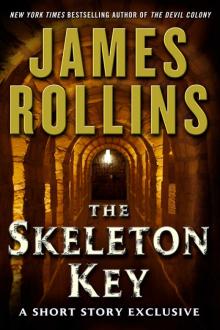 The Skeleton Key
The Skeleton Key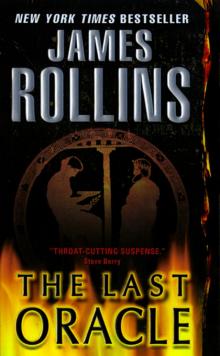 The Last Oracle
The Last Oracle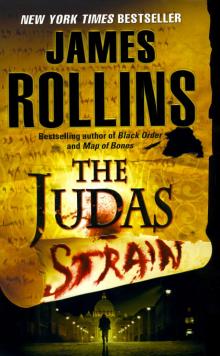 The Judas Strain
The Judas Strain Black Order
Black Order Sandstorm
Sandstorm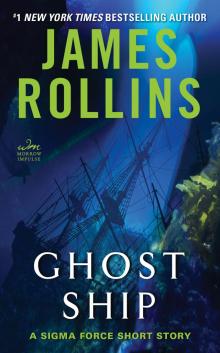 Ghost Ship
Ghost Ship The Devil Colony
The Devil Colony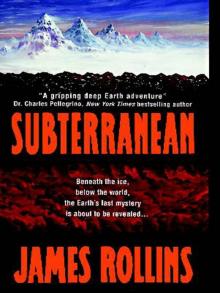 Subterranean
Subterranean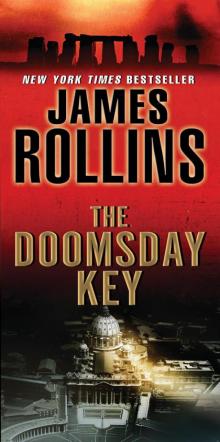 The Doomsday Key
The Doomsday Key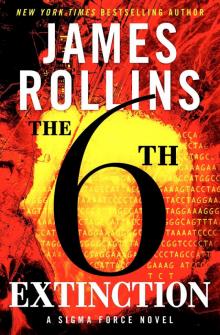 The 6th Extinction
The 6th Extinction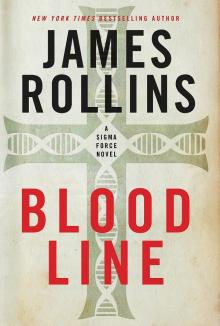 Bloodline
Bloodline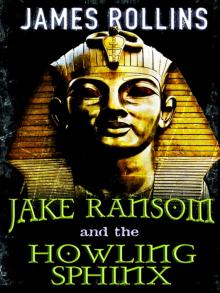 Jake Ransom and the Howling Sphinx
Jake Ransom and the Howling Sphinx The Midnight Watch
The Midnight Watch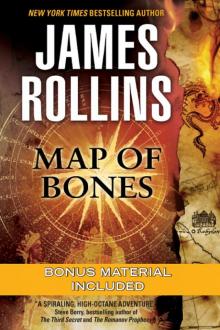 Map of Bones
Map of Bones The Demon Crown
The Demon Crown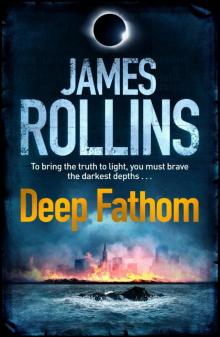 Deep Fathom
Deep Fathom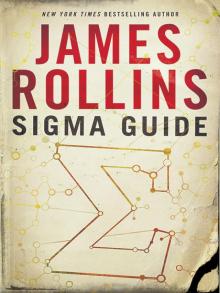 Sigma Guide
Sigma Guide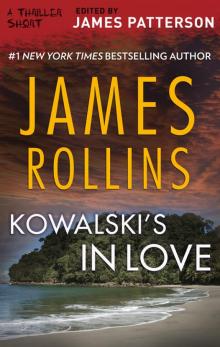 Kowalski's in Love
Kowalski's in Love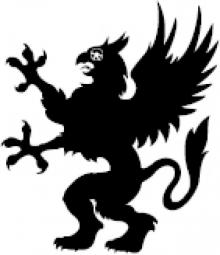 Jake Ransom and the Skull King's Shadow
Jake Ransom and the Skull King's Shadow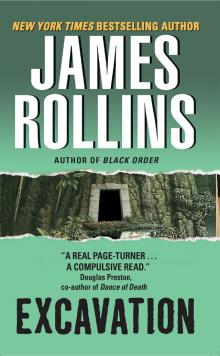 Excavation
Excavation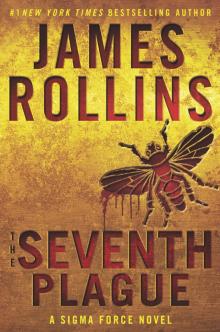 The Seventh Plague
The Seventh Plague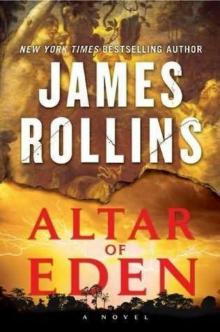 Altar of Eden
Altar of Eden Unrestricted Access: New and Classic Short Fiction
Unrestricted Access: New and Classic Short Fiction Indiana Jones and the Kingdom of the Crystal Skull
Indiana Jones and the Kingdom of the Crystal Skull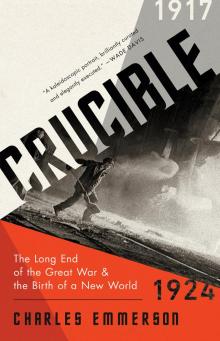 Crucible
Crucible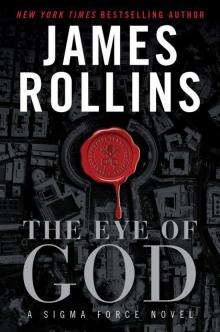 The Eye of God
The Eye of God The Bone Labyrinth
The Bone Labyrinth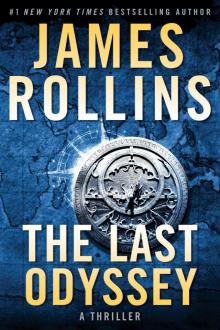 The Last Odyssey: A Thriller
The Last Odyssey: A Thriller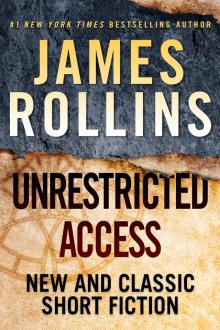 Unrestricted Access
Unrestricted Access Amazonia
Amazonia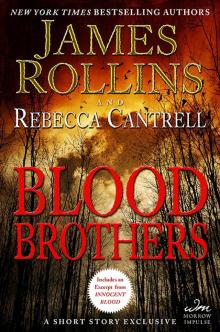 Blood Brothers: A Short Story Exclusive
Blood Brothers: A Short Story Exclusive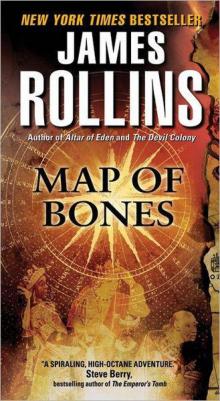 Map of Bones: A Sigma Force Novel
Map of Bones: A Sigma Force Novel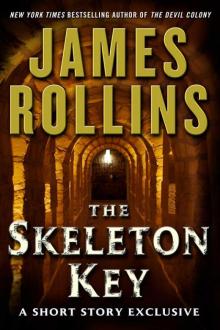 The Skeleton Key (sigma force)
The Skeleton Key (sigma force)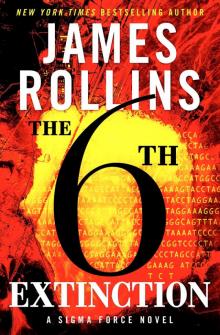 Sigma Force 10 - The Sixth Extinction
Sigma Force 10 - The Sixth Extinction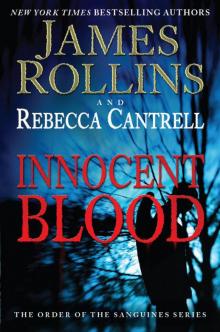 Innocent Blood
Innocent Blood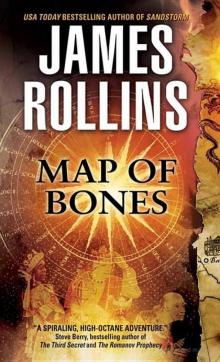 Map of Bones sf-2
Map of Bones sf-2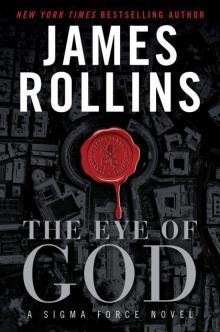 The Eye of God: A Sigma Force Novel
The Eye of God: A Sigma Force Novel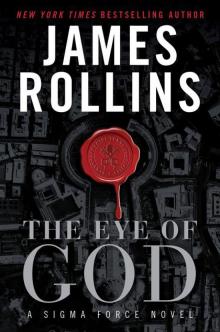 The Eye of God: A Sigma Force Novel sf-9
The Eye of God: A Sigma Force Novel sf-9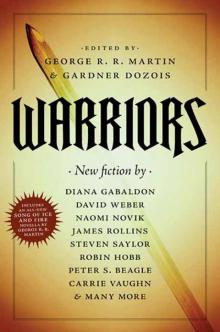 The Pit
The Pit Indiana Jones and the The Kingdom Of The Crystal Skull
Indiana Jones and the The Kingdom Of The Crystal Skull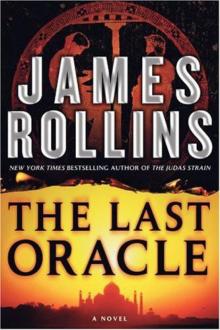 The Last Oracle (2008) sf-5
The Last Oracle (2008) sf-5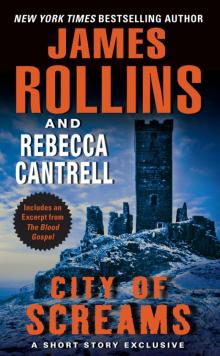 City of Screams
City of Screams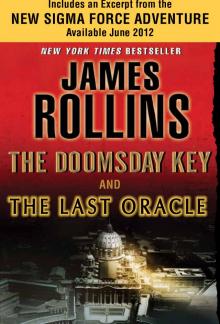 The Doomsday Key and The Last Oracle with Bonus Excerpts
The Doomsday Key and The Last Oracle with Bonus Excerpts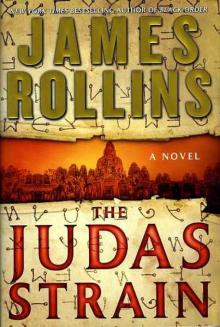 The Judas Strain sf-4
The Judas Strain sf-4 Blood Infernal
Blood Infernal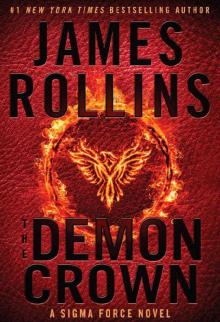 The Demon Crown: A Sigma Force Novel
The Demon Crown: A Sigma Force Novel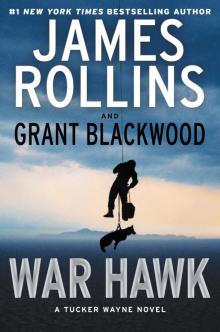 War Hawk: A Tucker Wayne Novel
War Hawk: A Tucker Wayne Novel SANDSTORM sf-1
SANDSTORM sf-1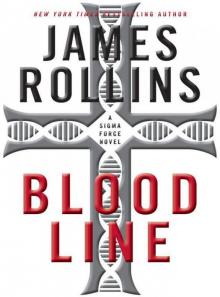 Bloodline: A Sigma Force Novel
Bloodline: A Sigma Force Novel Amazonia: a novel
Amazonia: a novel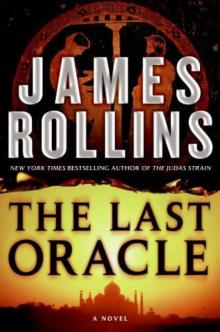 The Last Oracle: A Sigma Force Novel
The Last Oracle: A Sigma Force Novel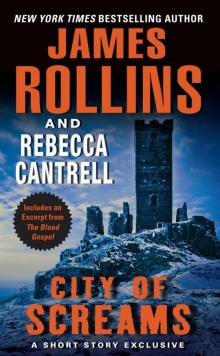 City of Screams (the order of the sanguines)
City of Screams (the order of the sanguines)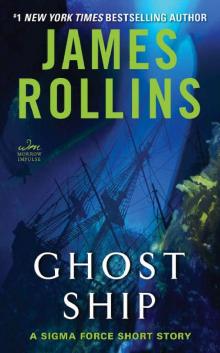 Ghost Ship: A Sigma Force Short Story
Ghost Ship: A Sigma Force Short Story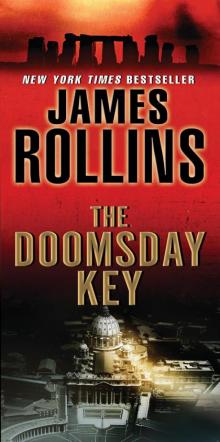 The Doomsday Key: A Sigma Force Novel
The Doomsday Key: A Sigma Force Novel